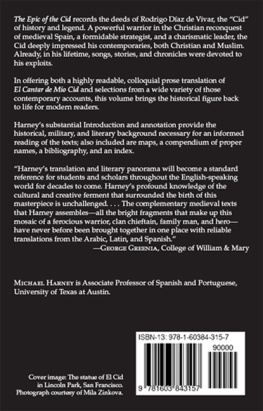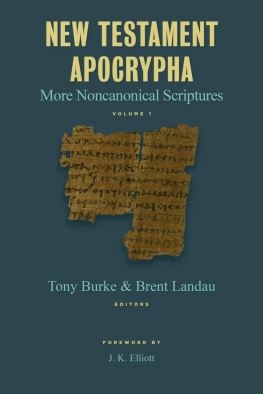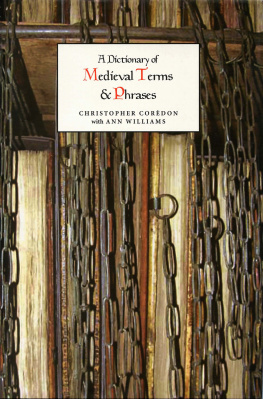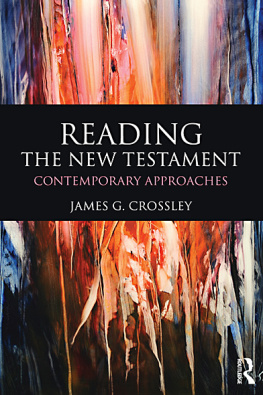THE EPIC OF THE CID
with Related Texts
THE EPIC OF THE CID
with Related Texts
Translated and Edited,
with an Inrtoduction, by
MICHAEL HARNEY
Hackett Publishing Company, Inc.
Indianapolis/Cambridge
Copyright 2011 by Hackett Publishing Company, Inc.
All rights reserved
Printed in the United States of America
15 14 13 12 11 1 2 3 4 5 6 7
For further information, please address
Hackett Publishing Company, Inc.
P.O. Box 44937
Indianapolis, Indiana 46244-0937
www.hackettpublishing.com
Cover design by Abigail Coyle
Text design by Mary Vasquez and Sara Stevens
Composition by Professional Book Compositors, Inc.
Printed at Sheridan Books, Inc.
Library of Congress Cataloging-in-Publication Data
Cantar de mo Cid. English
The epic of the Cid, with related texts / translated and edited, with an introduction, by Michael Harney.
p. cm.
Includes bibliographical references and index.
ISBN 978-1-60384-316-4 (cloth) ISBN 978-1-60384-315-7 (pbk.)
1. Cid, ca. 1043-1099Romances. 2. Epic poetry, Spanish
Translations into English. I. Harney, Michael, 1948- II. Title.
PQ6367.E3H37 2011
861.1dc22 2010028937
ePub ISBN: 978-1-60384-766-7
In memoriam
Frederic Amory
(19252009)
The Work
The Epic of the Cid (Cantar de Mio Cid) is the only medieval Spanish epic to come down to us in more or less complete form. Composed in Old Castilian, possibly some time in the latter part of the twelfth century, it was probably put into written form in the first decade of the thirteenth. It is known to us through a single manuscript, dating from the fourteenth century and housed in the Spanish National Library. The first page of the manuscript, and two others in the middle of the text, are missing. The text gives no indication of any title. English translations have called it the Song (Cantar), Poem (Poema), or Lay of the Cid. Only one of these terms is justified by evidence from the work itself: cantar, song, is used by the narrator to refer to the work. I have decided on epic for reasons that will be explained presently.
The Historical Background
Invaded by Muslim troops from North Africa in 711, Visigothic Spain was soon conquered and subdued by the invaders. Only a zone along the northern coast remained in the hands of Christians. Al-Andalus, as the Muslims called it, was an independent emirate from 756 to 912, then a caliphate in its own right from 912 to 1031, and during its heyday was the most prosperous and advanced civilization in Europe. Its great citiesToledo, Cordoba, Seville, Malaga, Saragossa, and Valenciawere famous throughout the Muslim and Christian worlds. Its economy, agriculture, science, military organization, and urban sophistication were the envy of medieval Christendom.
At the collapse of the Cordoban Caliphate in 1031, Al-Andalus broke up into independent city states called taifas. These remained relatively more advanced and prosperous than the Christian kingdoms to the north, but at the same time became more vulnerable to attack. This ushered in the era that came to be known as the Reconquest. Throughout most of the earlier years of this period, from the mid-eleventh to the early thirteenth century, the relationship between the two Peninsular civilizations was one of intermittent conflict rather than constant and systematic warfare. Raiding, pillaging, and extorting tribute were the preferred modes of Christian aggression, with outright conquest the exception (as in the case of Toledo, conquered in 1085 by Alfonso VI, the king of the Cids epic). In order to slow the Christian advance, two Berber dynasties came from across the Strait of Gibraltar to the ostensible aid of the imperiled Spanish Muslims, but stayed on to become de facto invaders and rulers of Muslim Spain. These were the Almoravids (10861147) and the Almohads (c. 11601248). The Cid confronted the first of these Berber dynasties, while the second was eventually overthrown during the culminating phase of the Reconquest. Notable episodes in that final chapter were the victory of Alfonso VIII and his Christian coalition at the battle of Las Navas de Tolosa (1212), and the campaigns of his grandson Fernando III, conqueror of Cordoba (1236), Seville (1248), and many other Muslim kingdoms of Al-Andalus. Only the mountain kingdom of Granada remained independent, persisting as a tributary state of Castile until its conquest by the Catholic Kings in 1492.
The Cid of History
Rodrigo Daz de Vivar, known to history and legend as the Cid, was born in the town of Vivar, near Burgos, in the early 1040s, into a family of infanzones, or barons of the lesser nobility. Orphaned in 1058, he was taken into the household of Sancho, the eldest son of King Fernando I. Fernando, on his death in 1064, had divided his domains among his five children. To Alfonso, the second son, he left Len, at that time the principal kingdom. Sancho received Castile, and Garca, the youngest son, was given Galicia. Fernandos younger daughter, Elvira, was given the town of Toro, while the eldest of the five siblings, Urraca, was given the city of Zamora.
After the death of their father, Sancho proved unwilling to abide by his fathers division of the kingdom. With Alfonsos help, he took over Galicia from their brother Garca. Then, turning on Alfonso, Sancho defeated him at the battle of Golpejera in 1072. After annexing Len and driving Alfonso into exile, Sancho then turned his attention to the domain assigned to his elder sister, Urraca. When she defied him from within her stronghold in Zamora, Sancho laid siege to the city. During the siege, according to some accounts, a Zamoran noble named Vellid Adolfo, pretending to be a deserter, assassinated Sancho. Returning from exile after the murder, Alfonso succeeded to the various realms once controlled by his slain brother.
Rodrigo Daz had served as Sanchos alfrez or constable (a post combining the functions of standard-bearer and captain of the royal guard) at Golpejera. One of Sanchos staunchest supporters, Rodrigo was not at first favored by Alfonso. The latter, however, sought to win Rodrigo over, granting him honors and arranging an excellent marriage with Jimena Daz, a woman of an aristocratic Asturian lineage. But increasing tension between Alfonso and his brothers one-time henchman led to Rodrigos banishment in 1081. The exiled Rodrigo served the Muslim ruler of Saragossa, Yusuf al-Mutamin, under whose banner he obtained victories against Christian Barcelona and the Muslim kingdoms of Lrida, Tortosa, and Denia.
Meanwhile, Alfonso had carried out the conquest of Muslim Toledo (1085). The Almoravids, the Berber dynasty controlling northwestern Africa, invaded Spain and defeated Alfonso at the Battle of Sagrajas (1086). Alfonso then reconciled with the Cid, after which the latter went to assist the Muslim ruler of Valencia, an ally and protg of Alfonso, in defending that city against attacks from the Muslim towns of Denia, Tortosa, and Lrida. After managing to gain control of Albarracn, Valencia, and other towns, the Cid marched to the aid of Alfonso, who was advancing into Al-Andalus.
Another quarrel between the two men provoked Alfonsos wrath and led him to take the Cids wife prisoner. In the meantime, a coalition was organized against the Cid, which consisted of the Muslim kingdoms of Saragossa and Lrida, as well as Christian Barcelona. The ensuing Battle of Tvar was won by the Cid, who took as prisoner Berenguer, the Count of Barcelona.
In 1091, as the Almoravids threatened another invasion, the Cid marched into Al-Andalus, intending to come to Alfonsos aid. After another falling out with the king, the Cid remained in Al-Andalus as Alfonso returned to Castile. The Cid retired to Valencia, where he fortified the citys defenses and formed an alliance with the emir of Saragossa and the Christian king of Aragon. While defending Valencia, the Cid declined to make outright war against Alfonso, even when the latter, allied with Genoa and Pisa, advanced against him. However, the Cid invaded the territories of his Castilian enemies, a number of whom were favored members of Alfonsos court. The king then decided to reconcile with his famous vassal.
Next page







